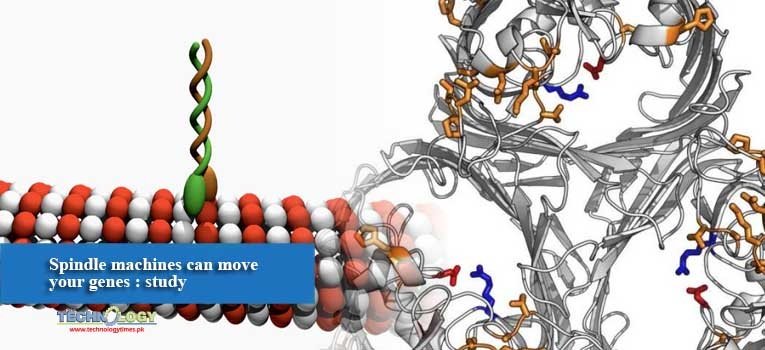By combining theory and experiment, researchers have discovered the surprising way one of these machines, called the spindle move your genes, avoids slowdowns and congestion.
 The spindle divides chromosomes in half during cell division, ensuring that both offspring cells contain a full set of genetic material. The spindle is made up of tens of thousands of stiff, hollow tubes called microtubules connected by biological motors.
The spindle divides chromosomes in half during cell division, ensuring that both offspring cells contain a full set of genetic material. The spindle is made up of tens of thousands of stiff, hollow tubes called microtubules connected by biological motors.
Microtubules are only propelled forward when connected to a neighbor pointed in the opposite direction. Previous observations, however, showed microtubules cruising at full speed even when linked only to neighbors facing the same way.
The researchers provide an answer to this puzzle. The microtubules are so entangled with one another that even those not actively launched forward get dragged along at full speed by the crowd.
If the plus and minus ends of both microtubules are aligned, the two pairs of feet walk in the same direction and the microtubules don’t move relative to one another.
If the microtubules are anti-aligned, the feet move in opposite directions, causing the microtubules to slide past one another. The collective motion of all the microtubules determines the spindle’s growth and form.
Real spindles, however, don’t exhibit this expected behavior. Microtubules surrounded by neighbors facing the same way still move at full speed. So what’s pushing them forward?
Experiments conducted by the researchers using microtubules and abundant kinesin motors matched these predictions. Additionally, the theory and experiments matched real-world spindles.